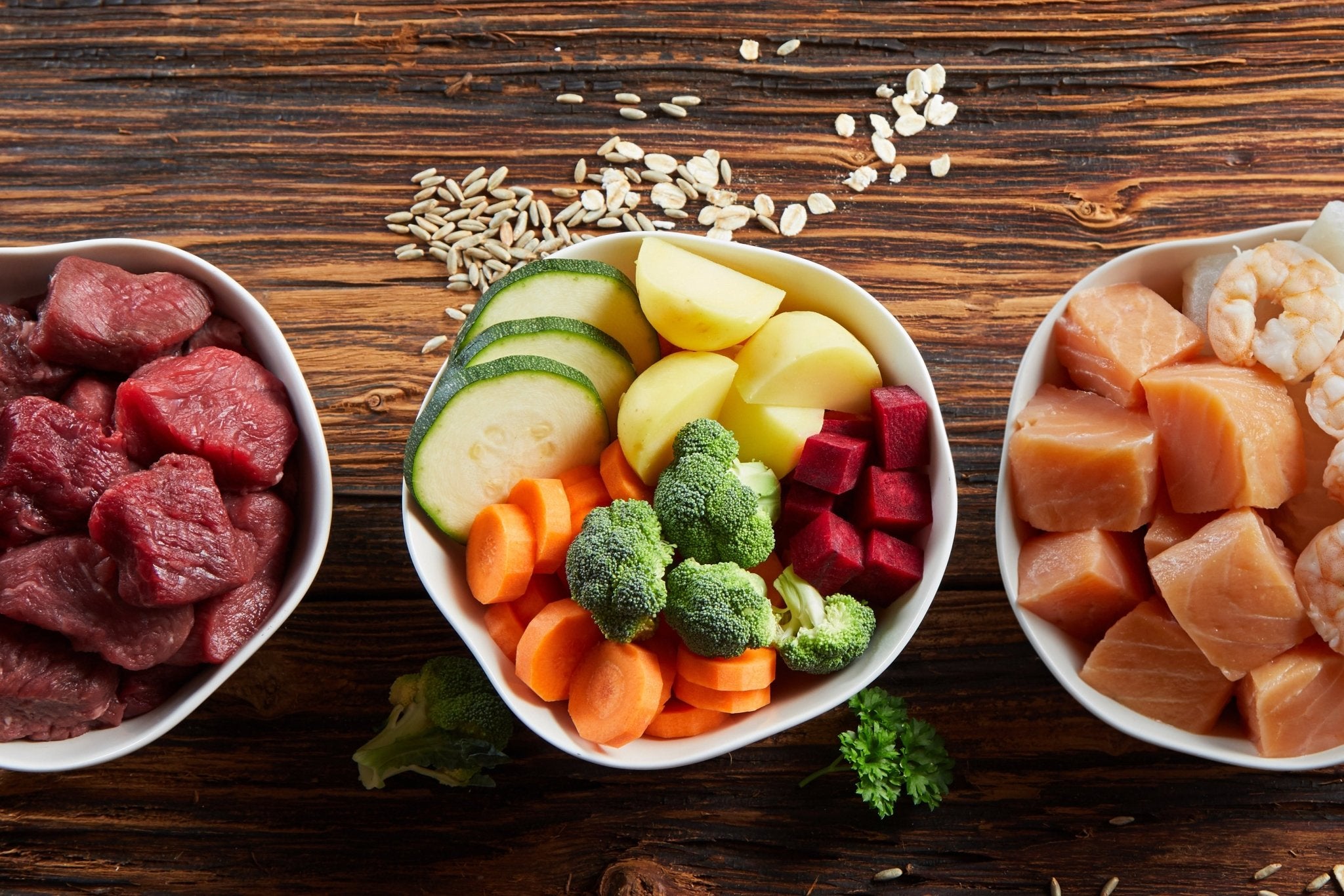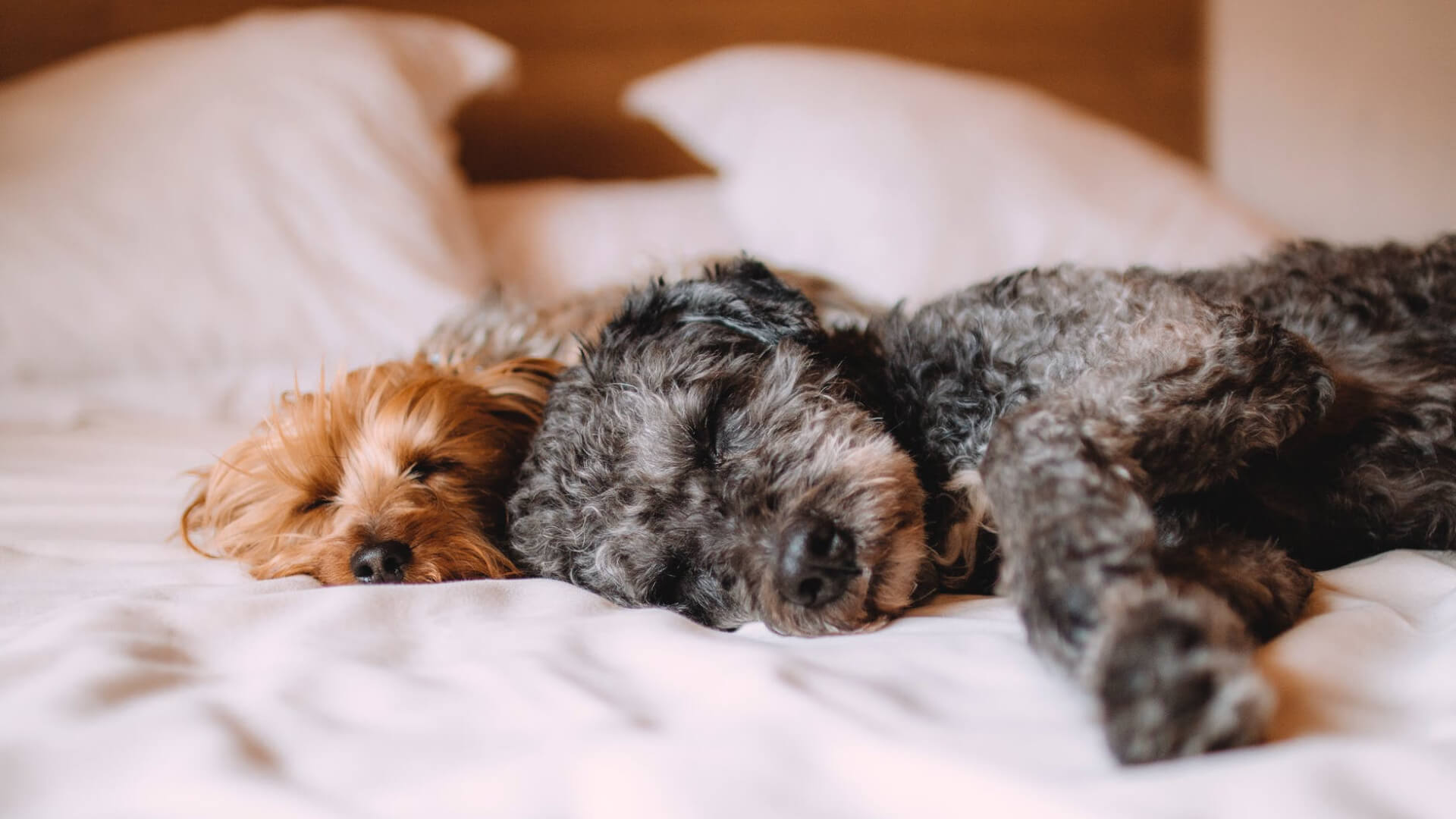Raw Feeding or BARF (Biologically Appropriate Raw Feeding) is actually not as complicated as it first appears. If you observe a few basic rules and pay attention to your animal, the switch to a raw fed diet will be successful and has many benefits for your pet. In our blog article "Raw Feeding Your Dog Properly" you will find out how healthy raw feeding is for your dog and how you can ensure the right nutrients are given.
However, there are some common mistakes that pet owners can make when feeding raw. If these are caught early, they’re easy to correct. But if nutritional imbalances go on for too long, deficiency symptoms may develop, leading to potential health issues. In this post, we’ll cover the five most common raw feeding mistakes and what to watch out for to ensure your pet stays healthy on a raw diet.
1. The daily meals do not cover the dog's needs
Every animal is unique, with its own personality and specific needs—and your dog is no exception! Their diet should be carefully tailored to suit these individual traits. For example, a calm dog who enjoys relaxed walks and downtime will need less energy than an active dog who loves long, vigorous runs. Factors like activity level, age, and overall health all play a role in determining the right balance for your dog’s BARF (Biologically Appropriate Raw Food) menu.
After transitioning your dog to a raw diet, it’s important to observe them closely to catch any signs of dietary imbalance early on. This way, you can make any necessary adjustments to keep your four-legged friend happy and healthy.
2. Lack of important nutrients
Many dog owners misunderstand the raw feeding, thinking it only involves feeding raw meat. While dogs are carnivores and thrive on a meat-based diet, they also need fruits and vegetables in smaller amounts. These plant-based ingredients provide essential fiber, which supports digestion and helps with nutrient absorption. Fruits and vegetables also supply vital vitamins and minerals that contribute to a well-rounded, balanced diet.
3. Beware of raw pork
Raw pork should never be included in your dog’s or cat’s diet, as it may carry the Aujeszky virus, which causes a deadly disease known as pseudorabies. This disease is triggered by the Suide Herpesvirus 1 (SHV-1) and is fatal for both dogs and cats, with no available vaccinations or treatments. Unfortunately, infection leads to a rapid and painful decline. To keep your pet safe, it’s best to completely eliminate pork from their feeding plan when following a raw diet.
4. Incompatible and toxic fruits and vegetables
Fruits and vegetables are important for raw feeding, but there are foods that are unhealthy or even dangerous for dogs. Avoid poisonous foods for dogs – these include:
- avocados (skin and stone)
- grapes
- raisins
- nightshade plants in their raw state such as potatoes, eggplants and tomatoes
- garlic (a tiny amount is ok and can be beneficial)
- onions
- almonds, macadamia nuts and a few other types of nuts
- chocolate
- coffee
- sweeteners (xylitol)
5. Cooked Bones, Excess Bone, and "Bone Faeces" in Dogs
Bones are an important source of calcium, phosphorus, and other essential minerals in a raw diet. Alongside organ meats, bones make up a key part of the meat portion. However, it’s crucial to avoid feeding cooked or fried bones. When bones are heated, they become porous and can easily splinter, potentially causing injuries in your pet’s mouth and throat. Additionally, load-bearing bones, like leg bones, are extremely hard and can damage your dog’s teeth, so these should be given sparingly or avoided.
It's also important to monitor the total amount of bone in your dog’s diet. Too much bone can disrupt the calcium-phosphorus balance, leading to mineral imbalances and increasing the risk of urinary stones. Overfeeding bones may also result in “bone faeces”—hard, chalky stool that can lead to constipation, rectal blockages, and intestinal damage. For a safe and balanced raw diet, always regulate the amount and type of bones you include.
Conclusion
Raw feeding remains the most natural approach to nourishing your dog. By following a few basic guidelines, raw feeding can be simple and manageable for any dog owner. Creating a tailored feeding plan based on your dog’s specific needs can make the transition smoother and ensure they receive all the essential nutrients. If you’re unsure or have questions about raw feeding, consider consulting your veterinarian or an animal nutritionist for guidance. You can always email our experts at hello@aniforte.co.uk for an help



